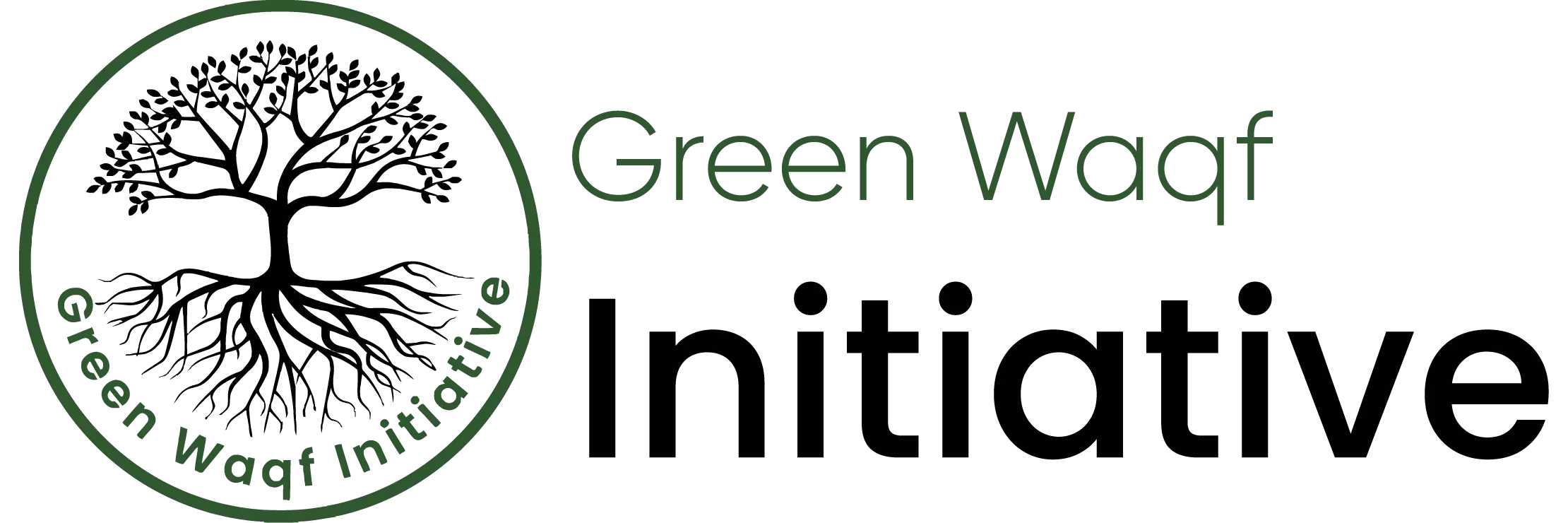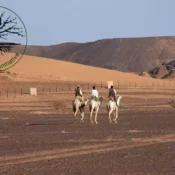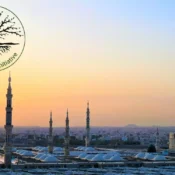
Chad Environmental Profile
These environmental profiles were produced as part of the Green Waqf Initiative by the Islamic Chamber of Commerce, Industry and Agriculture (ICCIA). ICCIA believes that the Islamic concept of Waqf can be used as a social financing mechanism to combat climate change. Through Waqf, the land is decommodified; therefore, it can be used only for specific purposes defined by the owner. These purposes can include reforestation, land revitalization and research centers, among others.
This environmental profile has been developed to assess the ecological situation in Chad and is part of a series that covers all ICCIA member countries. These profiles are meant to be used as a source to assist in policy dialogue, stakeholder engagement, and strategic planning and to help educate and raise awareness about the social, cultural and economic risks associated with climate change. The profiles provide relevant information on pertinent public and private sector policies and programs and the country's adaptation priorities and potentials.
Chad Environment Profile Team
Author: Fatima Faisal
Editor: Safia Hussain
Published on 20th November 2022
Islamic Chamber of Commerce, Industry and Agriculture
Block 9, KDA scheme 5, Clifton Karachi, Pakistan
Table of Contents
- Chad Environment Profile
- Chad Environment Profile Team
- About ICCIA
- About the environmental profile
- Section 1: Country overview
- General overview of Chad
- Climate change risks
- Chad’s commitment towards climate change
- Nationally Determined Contribution
- First National Climate Change Adaptation Plan
- Section 2: Sector-wise climate change causes and effects
- Agriculture
- Infrastructure
- Water and sanitation
- Conclusion & Recommendation
About ICCIA
The Islamic Chamber of Commerce, Industry, and Agriculture, an institution affiliated with the
Organization of Islamic Corporation (OIC), aims to strengthen collaboration in the fields of trade,
commerce, information technology, banking, insurance, shipping, joint venture, and many others
within member countries.
ICCIA is the sole representative of the private sector in 57 Islamic member countries and primarily
focuses on creating a knowledge platform for the private sector of the Muslim countries to connect
and learn. It provides visibility to the star performers for future growth and access to new markets.
Additionally, it lays out policy recommendations to enable a private-sector-friendly business
environment in policies, processes, paperwork, and payment system integration, to name a few.
Finally, ICCIA plays an integral role in promoting member country products and increasing access
between home and foreign markets.
About the Environmental Profile
Several experts claim that insufficient climate control policies have become a 'very serious' concern
and have been significantly harming a considerable proportion of the world's population.1 Some top
reasons behind climate change include heat-trapping greenhouse gasses, deforestation, use of heavy
machinery, powering buildings, and cutting down on farming livestock.
ICCIA's recent initiative focuses on promoting environmentally friendly and sustainable practices in
member countries to enhance societal impact, minimize waste, and improve living standards.
Chad is an extensively vulnerable country to climate change. High poverty paired with rising
conflicts, risks of droughts, and floods has put Chad in an unimaginably peril position.
Section 1: Country Overview
General Overview of Chad
As a landlocked country in Central Africa, Chad offers a mixed economic system with majority of the
population reliant on subsistence farming and livestock. Chad’s geography is diverse with arid plains
and deserts to the north and mountains to the northwest. Bordered with Libya, Sudan, Central African
Republic, Cameroon, Nigeria, and Niger, Chad is scuffling with conflict-related security challenges.
The current population of the Republic of Chad is 17,529,540 which is equivalent to nearly 0.21% of
the world population. Chad’s population density is 13 per km2 and the country also ranks as 72 in the list of countries by population.2 Moreover, Chad has one of the highest maternal mortality rates in
central Africa, with 856 deaths per 100,000 live births, a phenomenon exacerbated by the high
number of early pregnancies (164.5 births per 1,000 adolescents between the ages of 15 and 19).3
Climate Change Risks
Chad is one of the world's poorest countries. According to the Multidimensional Poverty Index (after
taking health, education, and living standards in consideration), approximately 87% of Chadians are
classified as poor.4 That is the world's fourth highest rate.
It is true that any poor or highly prone to poverty country will always remain vulnerable. However,
Chad’s situation becomes worse because of its geography making climate change a prevalent risk.
Chad's temperatures have been rising while rainfall has been decreasing since the mid-twentieth
century. Ninety percent of Lake Chad, the country's largest lake, has vanished over the last 50 years
due to multiple droughts and increased irrigation withdrawals. Multiple climate studies report that
temperature is likely to increase further during the 21st century which will lower crop yields,
aggravate pastures, and worse living conditions for anyone dependent on Lake Chad.
Rural areas are most vulnerable to climate change because they house the majority of the population,
and it is where most poverty exists. However, urban areas are not fully secure either. Even the
relatively more developed cities continue to struggle with the accommodation of new residents.
Chad’s infrastructure is at serious risk due to untreated sewage conditions, infected water supply, and
high risk of infectious diseases.
The chart below shows the average annual natural hazard occurrence for 1980 – 2020.5

Chad’s commitment towards climate change
Nationally Determined Contribution (NDC)
The NDC serves as both a framework and a benchmark for the country's climate commitments and
plans for reducing greenhouse gas emissions (GHGs) in accordance with the Paris Agreement. Chad's
revised NDC commits to a 19.3% reduction in GHG emissions by 2030, compared to the business-asusual scenario, with foreign assistance.6 Furthermore, because of the country's increased risks,
climate change adaptation is an important part of Chad's planning. To achieve its goals, the country
will rely on the co-benefits of adaptation and mitigation actions, with a reported conditional budget of
USD6.7 billion for mitigation and USD5.002 billion for adaptation measures.7
First National Climate Change Adaptation Plan
The National Adaptation Plan (NAP) allows Chad to engage in adaptation planning that responds
dynamically and coherently to the country's medium- and long-term needs, such as determining and
addressing critical challenges to effective adaptation. The objectives of the NAP process include:
- Building adaptive capacity and resilience to reduce vulnerability to climate change
- Facilitating the integration of climate change into new programs, policies, and activities within all sectors.
Section 2: Sector-Wise Climate Change Causes and Effects
Agriculture
Smallholder farmers in Chad are increasingly challenged by the weather volatility and uncertainty
caused by climate change. Chadian agriculture is heavily rain-fed and shifting, making it highly
dependent on the rainfall regime and thus vulnerable to climate change. Agriculture is dominated by
food crops, which account for 80-85 percent of the subsector.9 Chad's livestock production is
primarily extensive and centered on natural rangelands, which are the predominant forage resources
recommended for livestock feeding. Inevitably, livestock production will continue to be dependent on
the availability of forage resources, the productivity of which is closely related to annual rainfall.
Currently, the high uncertainty of water availability projections translates into high uncertainty of
drought projections. Furthermore, the impacts on climate change on agriculture is reflected in:
- A shorter agricultural season and more dry days during the agricultural season, causing
significant drops. - Cotton cultivation has gradually shifted from the Sodano-Sahelian zone to the Sudanian zone,
resulting in a receding production area for cash crops including cotton. - An expansion of crop pest distribution areas (insects, diseases, etc.) that can result in a
decrease in agricultural production.
The figure below shows Projections of crop land area exposed to drought at least once a year for Chad for different GHG emissions scenarios.10

Infrastructure
Climate change condition including extreme weather events such as flooding and increased
temperatures are expected to have a significant impact on Chad's infrastructure sector. High
precipitation amounts can cause road flooding, while high temperatures can cause cracks and
degradation of roads, protective structures, and bridges. Moreover, Chad's reliance on road
transportation is increased by the lack of railways, the seasonal navigability of rivers, and limited
airport facilities. The road density in the country ranges from 40.5km/1000km2 in the south to only
6.4km/1000km2 in the north.11 Extreme weather events will also have deteriorating consequences for
human settlements and economic production sites, particularly in densely populated urban areas such
as N'Djamena, Moundou, and Sarh. Extreme weather events are especially dangerous in informal
settlements: Makeshift homes are frequently constructed in hazardous geographical areas, such as
riverbanks, where flooding can result in the loss of housing, contamination of water, injury, or death.
Water and sanitation
The impact of climate change on Chad’s water sector can be clearly viewed by reviewing the
dramatic reduction in the water level of Lake Chad between 1996 and 1975. To make the situation worse, rainfall dropped by 95%.12 Not only Lake Chad, but other lakes in the country have been
significantly affected by rapid droughts in-between 1970 and 1980. For instance, Lake Fitri dried up
completely between 1973 and 1984 due to a significant decrease in inflows.
Lake Chad's evolution over the last few decades has become an important symbol of current climate
change in the country. It is still facing major threats, and its current variability to the effects of
climate change is extremely uncertain but illustrative
Conclusion & Recommendations
Droughts and floods are becoming more common as a result of climate change. Chad's geographical
location makes the country particularly vulnerable to rising climate concerns. It is one of the most
environmentally degraded countries on the planet, particularly in its western, northern, and eastern
provinces, where temperature increases are expected to be 1.5 times higher than the rest of the
world.13
In order for Chad to improve its climate change conditions, Chad must begin by recognizing its
climate change challenges, instilling more policies, and improving its sector-wise climate
contributions.



